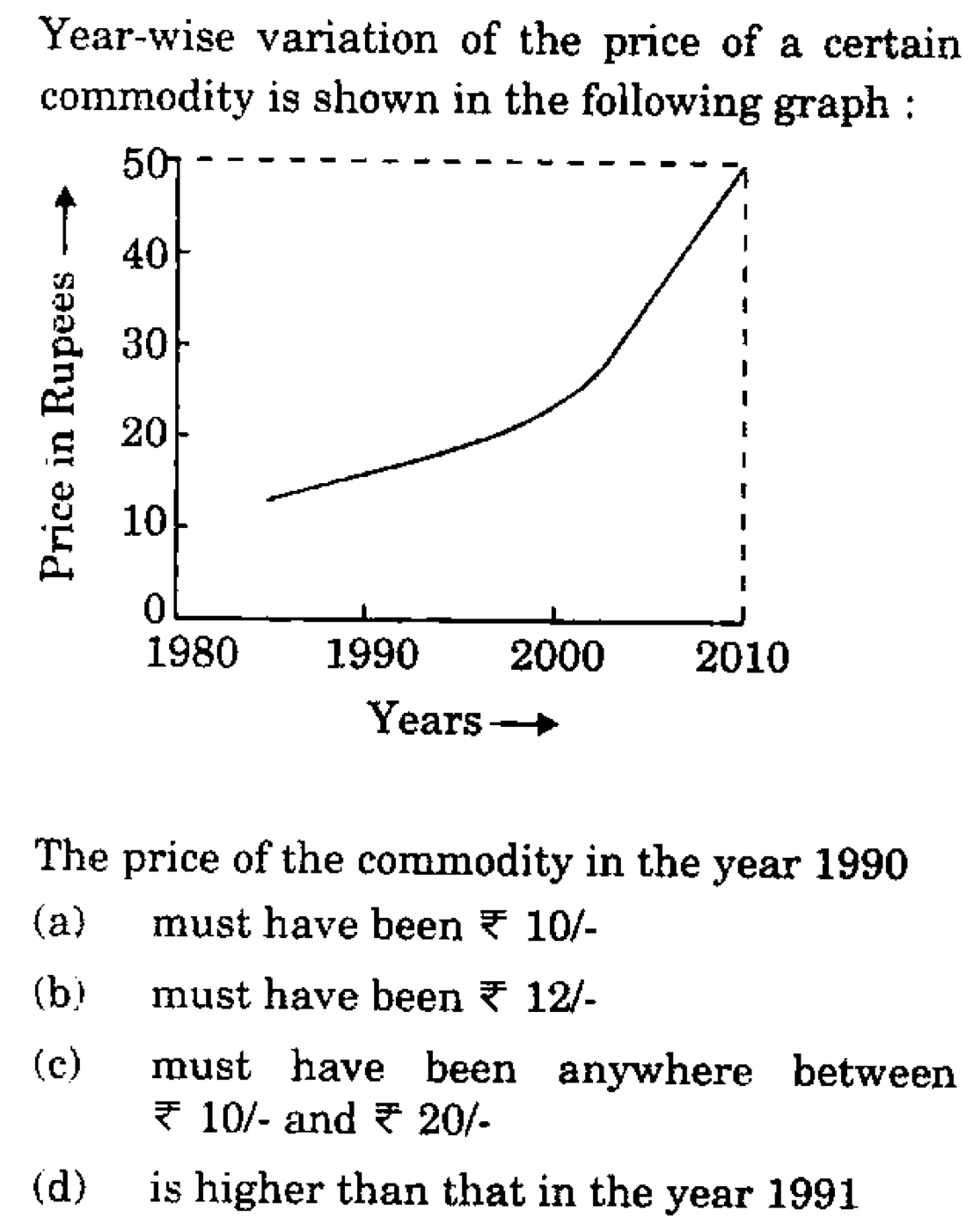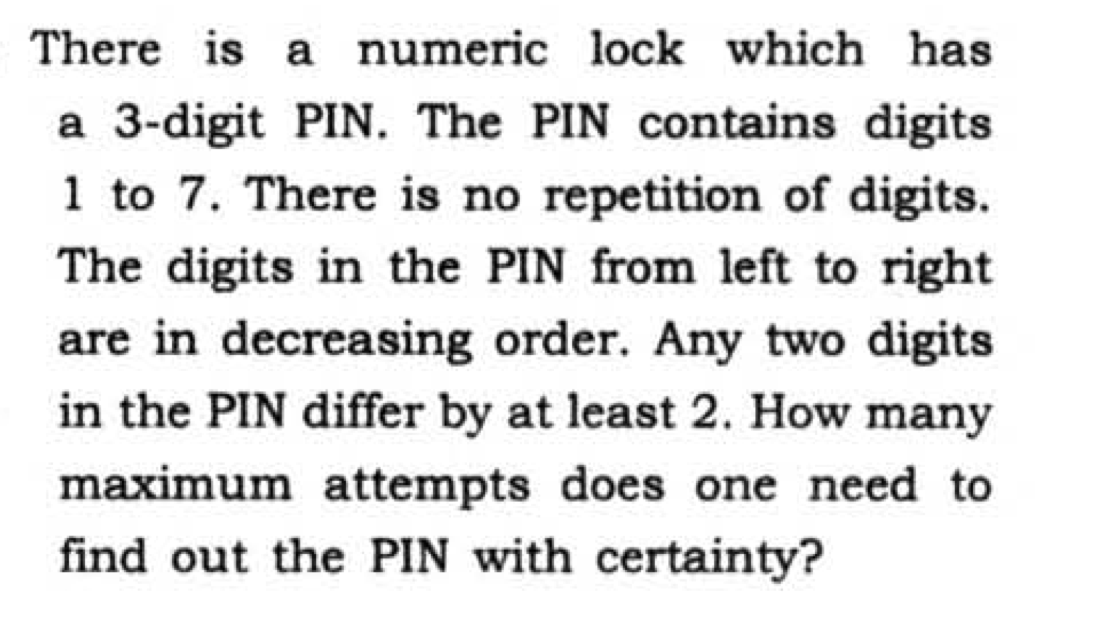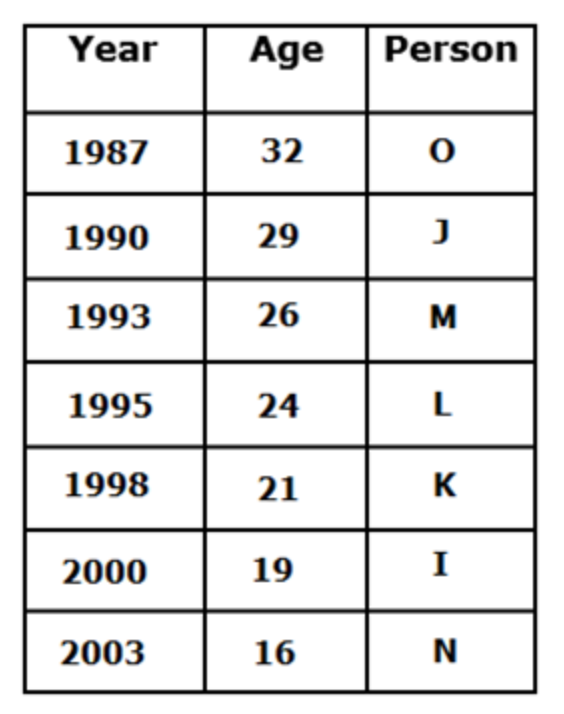Table of contents
Part 3: Reasoning
(Interpersonal skills including communication skills, Logical reasoning and analytical ability, Decision-making and problem-solving)
In this section, aspirants can score the maximum marks if you prepare the basics and master time management.
General Tips
- The answer to a reasoning problem is always hidden in the question, so one must understand the question carefully. A tricky questions might be easy if you comprehend the question.
- In questions based on data/diagrams, these illustrations are the most crucial part of the question. Observe them to arrive at the solution. See following question as an example -

- Remember the sequence of alphabets, i.e. which alphabet comes before/after a particular alphabet and also remember their numerical position as 1 to 26 and a reverse order.
| Alphabets | Alphabetical Order | Reverse Order |
| A | 1 | 26 |
| B | 2 | 25 |
| C | 3 | 24 |
| D | 4 | 23 |
| E | 5 | 22 |
| F | 6 | 21 |
| G | 7 | 20 |
| H | 8 | 19 |
| I | 9 | 18 |
| J | 10 | 17 |
| K | 11 | 16 |
| L | 12 | 15 |
| M | 13 | 14 |
| N | 14 | 13 |
| O | 15 | 12 |
| P | 16 | 11 |
| Q | 17 | 10 |
| R | 18 | 9 |
| S | 19 | 8 |
| T | 20 | 7 |
| U | 21 | 6 |
| V | 22 | 5 |
| W | 23 | 4 |
| X | 24 | 3 |
| Y | 25 | 2 |
| Z | 26 | 1 |
- In questions of a cube, imagine the object in a 3D. Eg. dice and paper folding etc. It will help to solve the relevant question.

- Pick the right questions. You should learn to identify the difficulty level of the questions. According to the difficulty level, solve the easiest questions first and then move to solve difficult questions in round 2 or 3.
- Don’t panic if you come across a few very difficult questions in row. If you've prepared decently and you are finding some questions difficult, it means probably everyone out there will find the paper difficult. In such a situation, if you are able to hold your nerves and keep calm, you will be able to score better! If you panic, you will be prone to make silly mistakes - thus unnecessarily losing marks.

- Time management is the key. If you get stuck in any question, learn to leave that question for a moment and move on. Go with the target to attempt 55+ questions in CSAT.
- Identify the sections from where UPSC is asking questions repetitively - focus on mastering these sections. Eg. Every year questions are asked on topics such as direction sense, series completion, syllogisms, blood relations etc. Prepare these topics thoroughly and practice solving questions
- Learn the simple techniques and formulas to solve the questions easily. Eg. Learn how to draw Venn diagrams of syllogism questions

- Reasoning mostly covers sections like Critical Reasoning, Analytical Reasoning, Verbal Reasoning and Data Sufficiency. If nothing comes out as a conclusion, try to eliminate options to arrive at a correct answer. Remember that the given problem will be solved by the data given only, don’t make any assumptions or judgments while solving the question.
- Employ Smart Work - Reasoning is never hard work. It is always the smart moves of the brain. So, you need to train your brain to work smarter each time. There is always a structure and pattern for every question. Try to find out it and follow a smart strategy.
- For questions on Puzzles and Seating Arrangement - Don’t spend more time on a single puzzle. If you are able to organise information fast, then only spend time on these questions. Always organize the information in the desired structure like table, circle, line, etc.
Eg. Seven persons are born in different years such as 1987, 1990, 1993, 1995, 1998, 2000 and 2003. All the person’s age are calculated by considering 2019 as the base year. Difference of age between I and J was same as between M and N. Both I and N are younger than M and J. I is not the youngest person of the group. Difference of age between I and J is 10 years. Difference between the ages of I and J is double the age difference of N and K. I was born in an even numbered year but younger than J who is elder than L. Age difference of N and K is equal to the difference of the age of L and J. L is younger than O but older than K.

- The questions asked from blood relations can be complex and convoluted but can be solved with ease if you know the basics. Learn to draw family tree. Also, you must be aware of different nomenclature related to family relations

- Practice is the key to success hence, practice solving as many questions as you can. Practice previous year question paper.